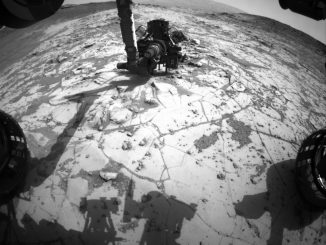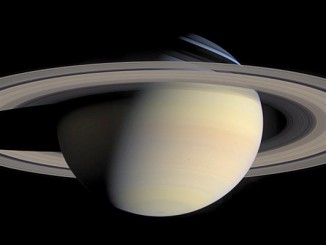
The array has already produced a new video of the radio sky, showing how it flickers and morphs over 24 hours.
“Our new telescope lets us see the entire sky all at once, and we can image everything instantaneously,” said Gregg Hallinan, an assistant professor of astronomy at the California Institute of Technology in Pasadena, and the principal investigator of the Owens Valley Long Wavelength Array.
One of the key goals of the project is to monitor extrasolar space weather — the interaction between nearby stars and their orbiting planets. Our Sun flares with radiation and hurtles particles and magnetic fields outward. Spectacular light displays, or auroras, are produced on the planets in our Solar System when those particles interact with chemical elements in the planets’ atmospheres. The same is true for stars beyond our Sun, and, if those stars have planets, they too would, in theory, have auroras.
Measurements of these interactions in other star systems could reveal new information about the strength of planets’ magnetic fields — and thus their potential for harbouring life. Magnetic fields were a critical factor in the development of life on Earth, offering protection from dangerous radiation and particles.
The radio antennas, which combine to form a powerful radio telescope, are based at Caltech’s Owens Valley Radio Observatory, near Big Pine, California. Other partners include: NASA’s Jet Propulsion Laboratory, Pasadena, California; Harvard University, Cambridge, Massachusetts; the University of New Mexico, Albuquerque; Virginia Tech, Blacksburg; and the U.S. Naval Research Laboratory, headquartered in Washington.
The array’s station consists of 250 low-cost antennas, each about 3 feet (1 metre) in size, spread out in the Owens Valley. Future plans include thousands of additional antennas; the more antennas in the array, the greater the image sensitivity. The small size of the antennas has benefits as well, leading to a huge field of view in the same way that binoculars can see a large patch of sky. The array covers the entire viewable sky all at once.
“Just as the antenna of your car radio can detect local radio stations no matter where they are around the car, these antennas can detect signals anywhere in the sky,” said Joseph Lazio, an astronomer on the project from JPL.
The Owens Valley Long Wavelength Array might also be able to gather traces of radio light from the very first stars and galaxies.
“The biggest challenge is that this weak radiation from the early universe is obscured by the radio emission from our own Milky Way galaxy, which is about a million times brighter than the signal itself, so you have to have very carefully calibrated data to see it,” said Hallinan. “That’s one of the primary goals of our collaboration — to try to get the first statistical measure of that weak signal from our cosmic dawn.”
Lazio said the array will help in the design of future space missions. Some radio wavelengths are blocked or reflected off Earth’s atmosphere, but in space the whole radio spectrum can be observed.
“Ultimately, we will likely need to construct a similar array of simple antennas and put it in space, or on the Moon,” he said.



